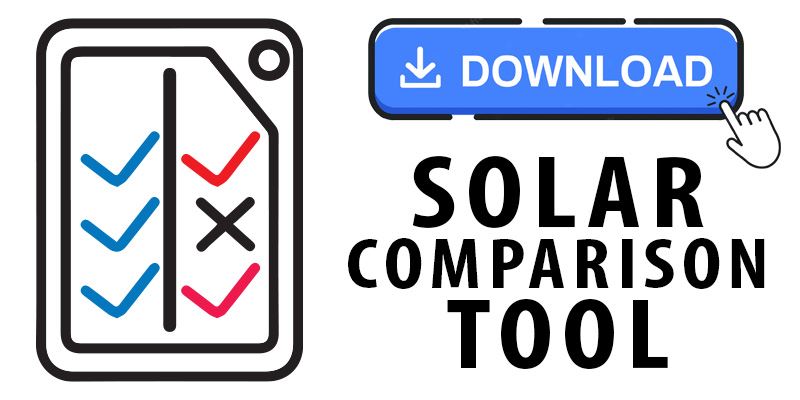So, you’re serious about having solar panels installed and making the switch to renewable energy. Although there are many potential advantages, it’s worth taking the time to consider your options as thoroughly as possible. Don’t let the complexity of solar proposals overwhelm you and your decision to go solar.
While each solar company has their own unique proposal, there are several key pieces of information that should be consistent with each proposal you receive. Understanding the appropriate context to compare solar proposals will ensure your ability to make an accurate and informed decision yielding the greatest long-term value, headache-free experience, and best home solar system available.
Here are [8] of those important items that you need to understand when reviewing and comparing your solar proposals:
Size and location of the solar energy system
Energy production estimates & assumptions
Components (equipment) of the solar energy system
Warranties and guarantees from the installation company and equipment manufacturers
Project scope (who’s doing the work)
Solar system cost, financial incentives & projections
Financing options & hidden costs
Company experience, reputation, and thoroughness
1. Size and location of the solar energy system
Your solar energy system size is based on your energy consumption and the number of panels required to meet your energy demands. Your solar proposal will include the size of the solar system expressed in kilowatts or kW. Larger commercial/industrial or utility scale systems are sized in megawatts or MW.
For example, an average residential solar system in New Mexico is typically around 8,000 watts or 8 kilowatts (kW). The total size of the system is calculated by multiplying the number of solar panels by the total watts per panel. For example, 20 solar panels that are 400 watts each would be an 8 kW system (20 X 400 watts = 8,000 watts).
In addition to the size of the system, the proposal should include some form of aerial picture or rendering of your property with the solar panels overlaid on the picture so that you can get a good idea of what your property will look like once the proposed solar system is installed.
2. Energy production estimates & assumptions used
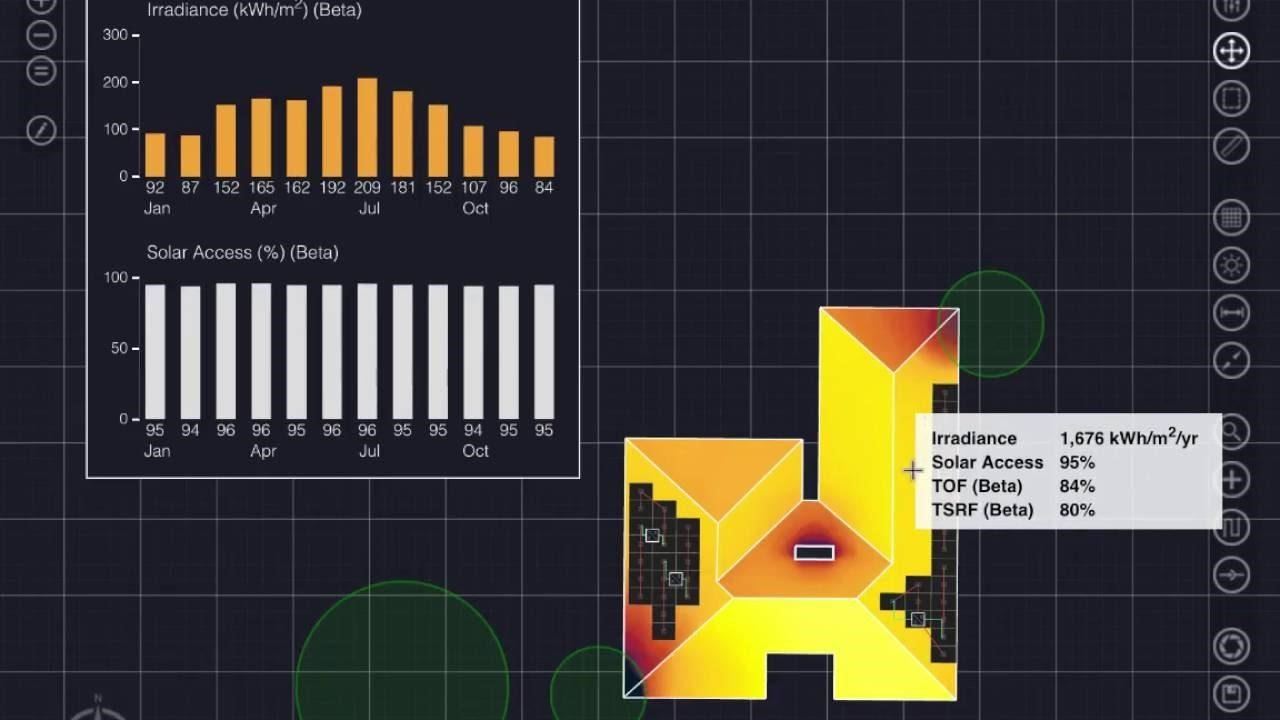
You’ll also receive an estimated energy production. Positive Energy Solar shows this as a year 1 estimated production (see “system details” image below) and guarantees the production within a certain percentage of this calculation.
Improperly accounting for shading from trees, sun-hours based on accurate azimuth and tilt, or incorrect solar panel efficiency and degradation can all create unrealistic and inflated production numbers. Any reputable solar company should have these calculations dialed in, but you can always ask what assumptions and calculations were used and if you’d like to check it out yourself, you can use the following free solar energy calculator from the National Renewable Energy Laboratory to get an idea for yourself.
3. Components (equipment) of the solar energy system
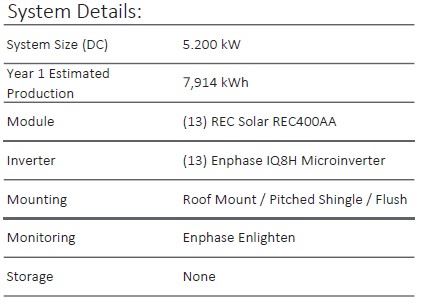
A list of components should be included in your proposal. This list should show the quantity, brand, wattage and model of the solar panels as well as the quantity, brand, and model of the inverters. If a solar company does not have this clearly stated on your proposal, it may be a red flag. Knowing exactly what solar equipment you will be receiving is important to the evaluation process because it can affect long-term performance and warranty coverage.
4. Warranties and guarantees
There are a few different kinds of warranties that keep your solar panels & inverters covered, and understanding the difference between them and what is covered (and by whom) is important when choosing the right solar company proposal, ensuring you get the best long-term value for your solar energy system. Many of these details may not be readily provided on the solar proposal, but make sure to see them in writing before signing any agreements.
Performance/Degradation Warranty
Offered through the solar panel manufacturer, this is the warranted level of power that a solar panel can theoretically produce today and into the future, with most performance warranties utilizing a 25-year timeline. This is one of the most important elements to consider when comparing solar system quotes and equipment.
For example, a 400 watt solar panel with performance warranty of 80% at 25-years means that it is allowed to reduce its useful energy generation by up to 20% over its warranty period-- the solar panel is only guaranteed to produce up to 320 watts at 25 years. In comparison, a 92% performance warranty means it will only lose 8% of its original power output--still producing 388 watts. When you consider this loss of power across each solar panel on your roof, the higher degradation can mean significant losses. A better solar panel performance warranty ensures your system will meet your energy needs today and well into the future.
Product/Equipment Warranty
Your solar panels and inverters come with a product warranty as well. The product warranty covers the integrity of the equipment and protects you against problems such as manufacturing defects, premature wear and tear, and catastrophic failures. Pay close attention to the details of what is and isn’t covered, the duration of the warranty, and remedies for warranty claims (e.g., some product warranties cover the cost of labor/shipping for replacement and others do not.)
Additional/Extended Warranties
Sometimes a solar company will offer to cover items outside the standard scope of a manufacturer’s product warranty. This can include items such as labor & shipping fees, or offering to cover all costs/replacements above and beyond the time period of the manufacturer warranty. Having a third-party extended warranty or insurance coverage can provide added value and benefit for your solar installation as long as it is being underwritten by a trusted organization.
Lifespan, and Warranty of the Inverters
One key component that often gets overlooked when comparing solar proposals is the inverter. To learn more about the differences in inverter types, check out our blog on micro-inverters vs string inverters. String inverters have a warranty of 10-15 years and thus will likely need to be replaced at some point, whereas microinverters carry a warranty that aligns with that of solar panels (typically warrantied for 25-years). While Enphase warranties the equipment for 25 years, labor costs for replacement may be charged after 2 years according to warranty. If your proposal includes string inverters, you’ll want to factor in the additional cost for replacement (around $3000+) in the future. Positive Energy Solar systems come with a 30-year insurance coverage through SolarInsure - so there are never additional labor charges for warranty claims.
5. Project scope (who’s doing the work and what’s included)
The term “solar company” can be a pretty vague description of the services provided, as not all solar companies are set up to be a one-stop-shop for your solar energy needs. As we’ve discussed in a previous blog, the solar industry has seen an increase in solar sales companies that outsource your project’s actual installation and project management. Solar contractors that design, procure, manage, install, troubleshoot and handle all other aspects of solar power systems are more invested in their work and likely to take responsibility for the results.
When comparing solar proposals, ask who will be performing the work and what the process would be for potential servicing of your system down the road. You might be surprised to learn that many solar companies don’t have a dedicated service department and if the company selling the system isn’t the one doing the installation, they might not have a solution for after-sale support which can actually cost you more in the future if you have to pay a different company to service your system.
6. Solar system cost, financial incentives & projections
Your proposal should include a cost and incentive summary. This summary should include the total cost of the system (cash price), the amount of the federal tax credit, the amount of tax savings from depreciation (if applicable, typically for businesses), state and local incentives, and finally the net cost of the system after incentives. It’s important to note that you should speak with a tax professional to understand how the tax incentives would apply to your situation, as you’ll need to have an appropriate taxable liability to benefit.
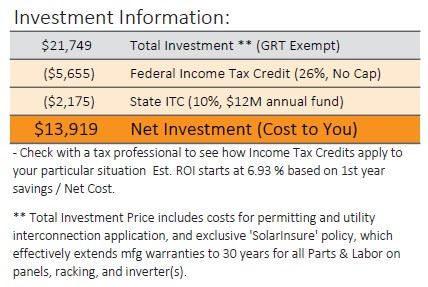
It's also important to look critically at the financial assumptions made. Quotes that use inflated annual utility rate increases may give the misleading appearance of heightened savings. Installers who stick to conservative increased rates around 4-5 percent offer more accurate portrayals of your solar power profits. Similarly, the amount of energy your solar energy system can produce in the first year will not be the same as year 15 (as mentioned previously, production/degradation warranties can vary drastically and play an important role in future energy production). While it is nearly impossible to predict exactly what the financial benefits will be, conservative and feasible numbers should be used to provide as accurate a picture as possible.
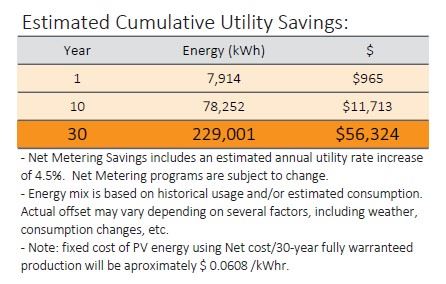
7. Financing options & hidden costs
How a solar system is financed is a huge part of the equation. It is also an area that leaves a bit more unknown to the customer. Cash purchases will provide the greatest ROI, but are not always feasible to those looking to have solar panels installed. Traditional solar lenders often charge a fee that becomes built into the contractor’s offer price (and therefore $/Watt). The interest rate will add to your total price paid throughout the life of the loan, and is amortized much like a mortgage. It will ultimately depend on what is important to you, because a lower monthly payment may be appealing but could come at an overall higher total cost.
8. Company experience, reputation & thoroughness
We can’t reiterate enough how important it is to do your homework on who you are doing business with --most of this information will not be on the solar proposal itself, so it’s a good idea to do some research on the company first, and be prepared to ask them about how they operate.
How long has the company been in business and installing solar panels in your area? An in-depth knowledge of local solar policies, city regulations, utility interconnection processes, HOA regulations and building codes specific to the region allow for a more accurate solar proposal with less chance for change orders or surprises and a better customer experience. Missing a required service panel upgrade can potentially cost you thousands of additional dollars in unforeseen project costs, and is avoidable with proper site evaluation.
All else equal, take some time to find out what the solar company is about. Why is this company in business? Are they a full-service, top-to-bottom company, or just a sales firm? Do they pay their employees fairly? What are they doing for their community? Is this the kind of company you want to support? Do you feel like they are easily accessible?
Hopefully with this inside knowledge and this handy solar comparison tool, you can feel confident in selecting a solar contractor to work with.
Looking to go solar in New Mexico? Request a proposal from Positive Energy Solar today!


